
It is truly astonishing the amount of equipment required to allow someone to continue living in their own home when the person has dementia combined with mobility problems and other medical conditions.
Most things are actually available through social services or the NHS but it’s not quite as simple as putting in a request and receiving what is needed. For one thing, you don’t know what you’re going to need at different stages. The handrail by the back door, which was helpful when the Goldfish started to become a bit tottery but could still manage steps with his walking stick in one hand, was utterly useless when he had to use a walker on wheels. Try getting that, and him, down steps!
Also ‘they’ don’t always tell you what is available even though they are the ones supposedly trying to keep people living independently in their own homes. And sometimes what they provide is not what is needed.
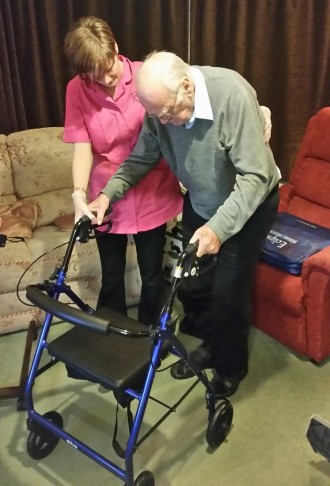
The wheeled walker. Can you imagine getting it and the Goldfish down the steps at the door without mishap? And can you picture the Goldfish sitting on it laughing uproariously as I ran up and down with it?
The Goldfish couldn’t get to grips with the NHS model of walker, which doesn’t have wheels and can’t be pushed along the ground so we bought him a walker on wheels. We were advised to go for the four-wheel type, which has a lidded storage box which doubles as a seat if the person needs a rest. The Goldfish thought it was hilarious to be pushed around the house while sitting on his like some god-like creature while I sweated and built up arm muscles which would have been useful on a building site. He also once mistook the lidded box for the toilet – but we’ll draw a veil over that.
When the Goldfish began to go walk-about at night, one instance involved the police who reported it to social services. We were given a door alarm and he was also – after being found unconscious on the floor one morning – given a fall detector.
Then came the time when the Goldfish couldn’t walk any distance and we requested and were provided with a manual wheelchair. We still had the crazy performance of getting him down the steps and into the car, out of the car at our destination and into the wheelchair. By the time they were able to provide a banana board, which fits between the chair and the car seat, the Goldfish, although physically able no longer had the mental capacity to understand what he should do.
We bought various bits and pieces to help – a thing which hooked on the door so the Goldfish could pull himself in could double as a tool to smash the window if we had a crash. Finally, we bought a vehicle
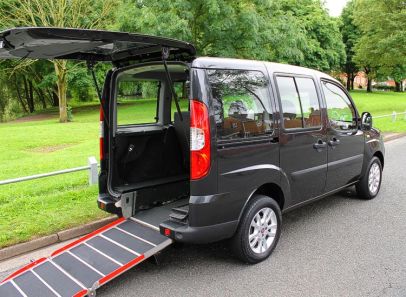
It was lucky the Goldfish had some savings and could afford to buy this vehicle which allowed him regular outings – so many people arre not in such a fortunate position.
which was adapted to take the wheelchair up a ramp into the back. I am well aware many people are not in a situation to be able to do this. I guess their Goldfish can only enjoy outings within chair-pushing distance.
We were so lucky we had an exceptional occupational therapist who visited whenever we needed help. She recommended the handrail in the early days and, later, a raised toilet seat, a handrail by the loo, had joiners in to remove the raised lip in doorways and to re-hang the bedroom door so it opened in such a way we could wheel the chair in. It meant dad’s dressing gown hook was now on the outside of the door! But life was much easier when we didn’t have to dodge around a door.

The Goldfish rather enjoyed using the stand aid – gripping the handles like he was on a motor bike!
One of the things which made the biggest difference to our lives was the stand aid, which enabled us to help the Goldfish out of his easy chair and into his wheelchair. We’d seen one used in the hospital. The DH said we needed one for home use. I think they just laughed at his request in the hospital but our wonderful occupational therapist was soon on the job and managed to obtain one for us. Without it, we were liable to put our backs out plus the Goldfish was likely to end up with pressure sores if he sat in his chair all day every day. Again, it was a case of asking for what we needed and again, I’m so aware that people who need such an aid probably don’t receive it because they don’t know about its existence, don’t know it is available and so don’t ask. And probably don’t have the exceptional occupational therapist the Goldfish had.
A major problem was that the support workers who came in would not use it without a second person helping – health and safety! This meant one of us always had to be on hand, which rather undid the benefit of having a carer in to give us a break. I read and re-read all the literature which came with the stand aid and nowhere did it say it required two people to operate it.
The second invaluable piece of equipment was a hospital bed. Getting the Goldfish into and out of bed had become a nightmare. By then he could do little to assist us and the strain on our backs was dreadful, plus it was horribly undignified for dad to be heaved around like a sack of coal. The bed had an air mattress to prevent pressure sores, it went down and went up, and the top could be raised, as could the bottom part if he needed to keep his feet up. I’m sure it could have made the bedtime drinks if we could figure out the programme!
We would not have had any of those aids had we not asked. No one told us they were available for use at home. Obviously, I can only speak from our experiences in south west Scotland – things may be different elsewhere (though I suspect not any better) but I’d advise anyone caring for a relative at home to ask and keep asking for anything and everything which will make life easier. They want to allow people to stay in their own homes (cheaper than residential care) so they need to make it easier to do so.
The other thing we were able to access for the Goldfish was a new, made to measure wheelchair – but this post is long enough so I’ll keep that story for next time.



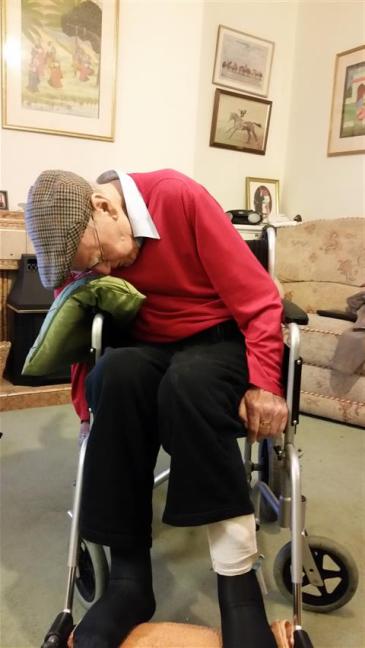
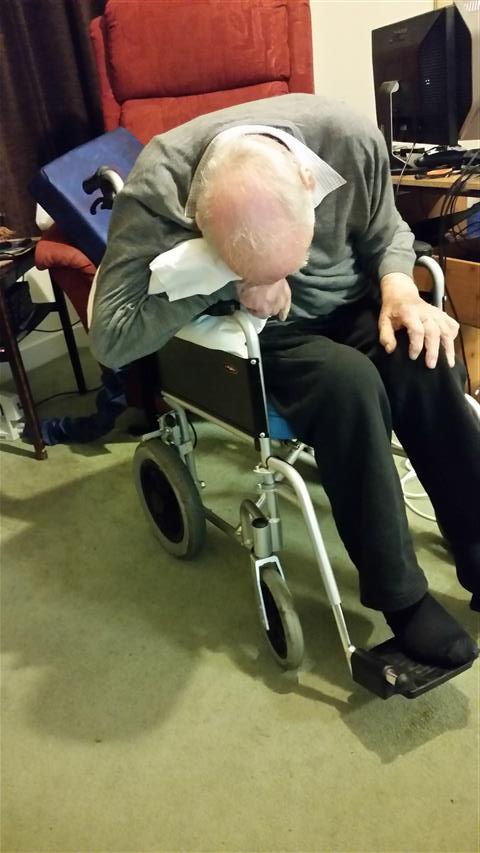
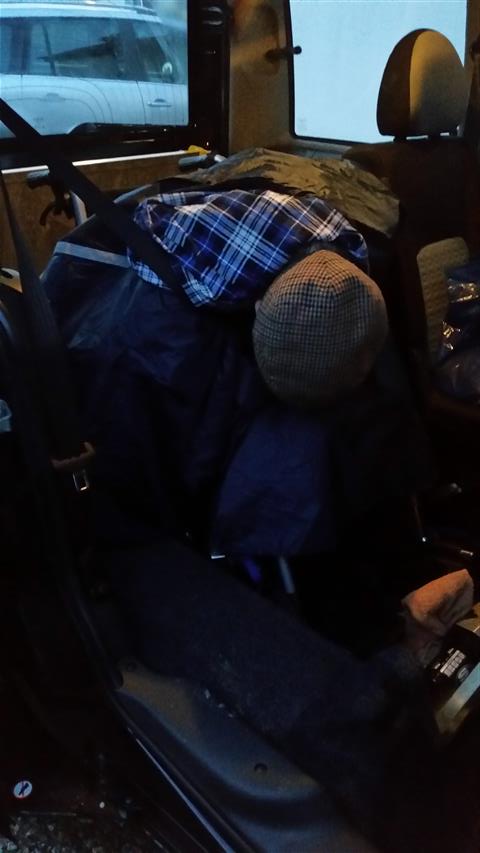


 VOTING IS NOW OPEN FOR THE BLOGGERS BASH AWARDS (ABBAs)
VOTING IS NOW OPEN FOR THE BLOGGERS BASH AWARDS (ABBAs)











